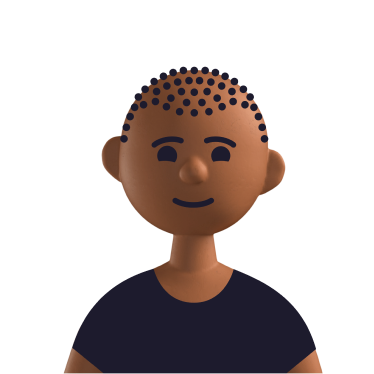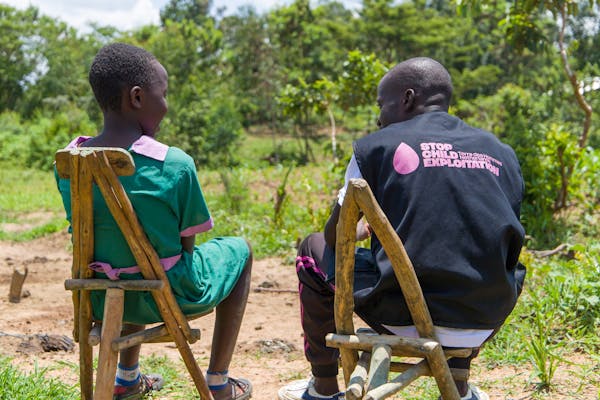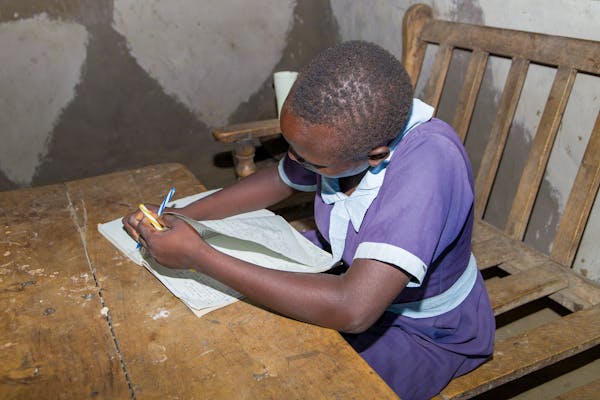

Action against Child Labour (Kenya)

Three out of ten Kenyan children have to work to survive.
In Busia County, on the border of Kenya and Uganda, this number is even higher. Many children are engaged in child labour. They live in deep poverty and are forced to do heavy and dangerous work. Together with our partner Investing in Children and their Societies (ICS) we work to prevent and respond to child labour in this area.
-

Evans Munga
Project Manager- KenyaWe are tackling child labour on several levels at the same time. In addition to parents, schools and communities, we work with local governments and the business community. We also raise awareness in the service sector so that entrepreneurs know what rights children have.

Background
Child labor severely harms children’s health and development through dangerous, age-inappropriate work, including handling toxins and hazardous tools, in various sectors. Some children are also exploited through smuggling or prostitution.
Poverty is the biggest risk factor for child labour. Children grow up in families where there is not enough food and where there is no money for school. A second risk factor is the family situation. Many children come from single-parent families or child headed households. Moreover, many parents do not know what child labour is and how to protect their children.
Extra risk at the border
In the border region between Kenya and Uganda, children are at extra risk. They are less intensively controlled at the border crossing and are therefore an easy target for people with bad intentions. For example, human traffickers take children across the border. There they are sold as cheap labour or to be sexually exploited. Or children are exploited by truck drivers and used for illegal activities such as smuggling of drugs.

Goals
Our goal for 2025 is to inform, assist and mobilise 10,000 children and 50,000 family and community members in the fight against child labour.
We focus on improving prevention of and response to child labour while mobilising and strengthening capacity of key stakeholders including children to advocate for systemic change.
Approach
To identify and address child labour in the Busia region, we proactively seek collaboration with:
- Children and families
- Village elders, church leaders and volunteers from the local community
- Local governments
- Entrepreneurs in the service sector
Empower children
We teach children what child labour is, why it is dangerous and the importance of education. For example, we provide awareness creation on CL and life skills training in child rights clubs at schools, so that children know what their rights are and how they can be protected. Children are targeted with preventive messages and information, participation in key project activities as well as response services which include: education support, counselling, legal support, shelter and other basic needs (on a need basis). Children in school are reached via Child Rights Clubs,, peer to peer engagement and peer leaders training. Those out of school are reached through sports tournaments and targeted dialogue forums where they are empowered to express their views to duty bearers and caregivers..
We teach children what child labour is, why it is dangerous and the importance of education. For example, we provide awareness creation on CL and life skills training in child rights clubs at schools, so that children know what their rights are and how they can be protected. Children are targeted with preventive messages and information, participation in key project activities as well as response services which include: education support, counselling, legal support, shelter and other basic needs (on a need basis). Children in school are reached via Child Rights Clubs,, peer to peer engagement and peer leaders training. Those out of school are reached through sports tournaments and targeted dialogue forums where they are empowered to express their views to duty bearers and caregivers..
Key Strategies
- Peer-to-peer approach
- Mentorship and life skills education
- Skills training and apprenticeship
Prevent and Report Child Labour
We train caregivers, teachers and children to enhance their agency in prevention, identification and reponse to child labour. For out-of-school children, we work with village elders, church leaders and volunteers in the local community to identify victims of child labour.
Empower and support parents
To have a lasting impact in the fight against child labour, parents are also educated about children’s rights and the dangers of child labour. We believe that families are the first line of defence for children against any form of exploitation. They, therefore, play a critical role in protecting children against CL. We empower them to have strengthened capacity to care for, protect and provide for the needs of their children. We work with families, community members, leaders and structures to support their children’s access to education, health, and legal services. Parents receive parenting support so that they know how to guide and protect their children. They are helped to earn a better income, for example with the capital to start a small business. That way they can offer their children a safe home and ensure that they go to school.
Key Strategies
- Sensitisation/ awareness creation on children’s rights
- Community dialogues/conversations
- Skillful parenting/positive parenting
- Economic empowerment/household economic strengthening
Collaborate with national and local governments
In addition to parents, schools and communities, we also work with national and local governments. We engage the government at both National, County and at sub-county levels. At the national level, we engage to influence policies and coordinate the implementation of the laws and policies. At the County level, we engage with the government to influence the enactment of laws and policies, allocation of resources towards CL and monitoring of labour activities. We support the government to organise and lead multi-sectoral engagement with key stakeholders including government and private sector players on issues of CL.
Key Strategies
- Policy and laws audits/reviews
- Policy dialogue and support inadequate implementation of relevant laws
- Research, evidence generation, and dissemination
- Capacity building for the private sector and government
- Lobby and advocate for ethical business practices in the service industry guided by
- Children’s rights and Business principles/UN Guidelines on Business and Human Rights
The social accountability
Support Law Enforcement
We work with the law enforcement agencies (LEAs) through awareness raising, and training/capacity building to gain knowledge on CL including laws and policies in order to respond effectively. With enhanced capacities, they will be able to ensure children are protected from CL and the need for coordination with other duty bearers including the Department of Children’s Services and the Ministry of Health.
Engage the private sector
We target different private sector actors and their associations which are the identified places where children are being exposed to CL. We sensitise members and their networks on the effects of CL and dialogue with the private sector about the harmful impacts of CL and their involvement in combating the vice. We aim to enhance responsibility and accountability from the private sectors on issues CL. We work towards ensuring the private sector adopts responsibility and develops the adequate capacity to domesticate and implement CL prevention related laws and policies.

Partner
In this project, Terre des Hommes Netherlands partners with the organisation Investing in Children and their Societies (ICS). ICS offers children a safe and stimulating environment to grow up in. This means children are protected from violence and abuse and their parents can provide for them (food, clothes, education). Together we have the knowledge, resources and expertise to successfully tackle the enormous problem of child labour.